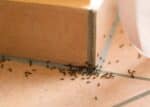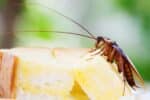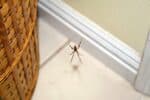
Effective Mosquito Solutions for Your Backyard
If you’re looking for a quick and easy way to keep biting mosquitoes away from your home, you’re not alone. It’s not hard for mosquitos to interrupt a peaceful evening or barbeque by swarming around you, buzzing, and leaving bites. Luckily, there are many methods that can be used to reduce the presence of mosquitoes around your home. The question is, what is the most effective mosquito control method? We’ll walk through how to take control of the mosquitoes buzzing around your yard.
What are mosquitoes attracted to?
In southern Florida, mosquito control is a year-round concern. Many parts of the country have mosquito season in the summer, but the humid climate of Florida offers a climate in which they can thrive throughout the year. Mosquitoes are attracted to humid areas with a lot of moisture, and since it rains in South Florida most of the year, they tend to flock to the area.
Are mosquitoes harmful?
Believe it or not, mosquitoes are more than just a nuisance. These blood-sucking insects can carry diseases that can then be transmitted to humans and pets. Mosquito-borne diseases are spread when an infected mosquito bites you. Some of these diseases include:
- Zika Virus: results in often mild symptoms like joint pain, red eyes, fever, and rash for most people, but when pregnant women are infected, their baby is at risk of the birth defect microcephaly, which results in brain damage and microcephaly. At-risk regions include the Caribbean, Southeast Asia, and South and Central America.
- West Nile Virus: most people do not have symptoms, but some develop joint pain, fever, diarrhea, vomiting, or a rash. Rare complications include brain infections like encephalitis or meningitis. Present in the mainland U.S.
- Malaria: rare in the U.S., but widespread throughout sub-Saharan Africa, South America, and South Asia. Causes fever, headache, chills, and vomiting.
- Yellow Fever: named for one of the symptoms, jaundice, which can result from more severe infections, less serious cases result in symptoms like chills, vomiting, and backache. If you travel to Africa, Latin America, or some other place where the disease is present, be sure to take proper precautions.
Tips for Getting Rid of Mosquitoes
Now that we’ve covered the potential risks that mosquitoes can pose to your or your loved ones, we’ll provide answers on how to keep them away. For the best backyard mosquito control, it’s important to use a variety of methods to get the best results. Here are a few steps you can take to get started:
1. Eliminate Standing Water
For decades, this has been the best, most effective method for mosquito control. This technique is designed to keep mosquitoes from showing up in the first place. Eliminating standing water works because it removes the place where mosquitoes tend to breed. Even a small container of water can act as a breeding site, so you will want to do a thorough inspection of your yard for even the smallest amount of standing water.
Common places in your backyard where standing water accumulates can include toys, planters, boats, garbage cans, gutters, water dishes for pets, fountains, bromeliads, and kiddie pools. Swimming pools are not usually a concern because they contain chlorine, which drives mosquitoes away.
If you notice standing water pools after heavy rain that take a long time to drain, we recommend having your yard checked for drainage problems. The pooling water will continue to attract mosquitoes until the drainage issues are addressed.
2. Keep Grass and Vegetation Trimmed
Direct sunlight deters mosquitoes from gathering in your yard because they tend to prefer cool, shady locations. Eliminating or trimming trees and shrubs or regularly cutting grass and brushy areas can help eliminate the cool areas where mosquitoes tend to rest and congregate. Trimming the overgrown areas will help eliminate wet or damp spots that attract mosquitoes in your yard.
You can also incorporate plants into your landscaping that repel mosquitoes. Citronella is a clumping grass that is well-known for its mosquito-repelling properties. It gives off a strong smell that will cover up other scents and drive away mosquitoes.
Other plants like geraniums, marigolds, and pennyroyal grow beautiful flowers while delivering practical benefits by working as a mosquito repellent. Many herbs and other aromatic plants drive mosquitoes away as well. Consider planting basil, rosemary, peppermint, lavender, lemon balm, and garlic.
3. Utilize Fans
This simple but effective solution for backyard mosquito control can be very effective. Mosquitoes are attracted to the carbon dioxide that humans emit naturally. The breeze from the fan works to break up the carbon dioxide that helps bugs find you. Additionally, the breeze makes it more challenging for the bugs to land on and bite you.
Plus, they have the added benefit of providing a nice breeze during the warmer months when mosquitoes are at their peak. For any covered outdoor areas, you might consider installing a ceiling fan, but an oscillating fan can do the job, too.
4. Light Citronella Candles and Install Bug Lights

A tried and true classic in many backyards, citronella candles will help repel mosquitoes in the area immediately around it. You can also replace the outdoor light bulbs in your outdoor areas with “bug lights.” This special yellow bulb is designed to emit a light that will not attract bugs. These lights will allow you to illuminate your yard without huge clouds of mosquitoes forming around your property.
Often outdoor lights are installed near the entrances to your home, which is the last place you want mosquitoes gathering. In addition to not attracting bugs to your backyard, these lights make it more challenging for mosquitoes to enter your home. Bug zappers are also helpful to attract and kill mosquitoes. The ultraviolet light source with an electrocuting grid is irresistible to mosquitoes, so when they are flying near your yard, they will be attracted to and killed by the zapper.
Leave Home & Backyard Mosquito Control Solutions to Hulett
The mosquito prevention solutions we have discussed may only provide a temporary fix and may not be able to get to the root of your mosquito problem. Often this is because mosquitoes are breeding near or around your property, and until that issue is addressed or treated, mosquitoes will continue to appear in your backyard. If you’re looking to eliminate mosquitoes for good, lean on the pest control experts at Hulett Environmental Services. Our team utilizes EPA-approved products, which when properly applied by a trained mosquito-control expert, will control mosquitoes and reduce their population on your property. Contact our team at Hulett to set up your free inspection today and return to a mosquito-free backyard!



